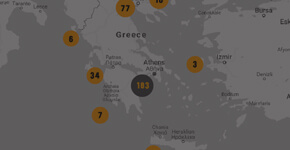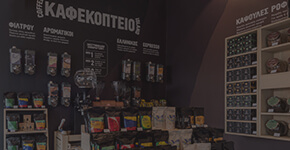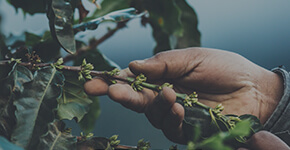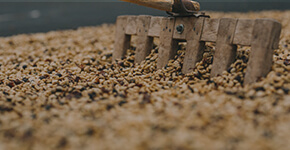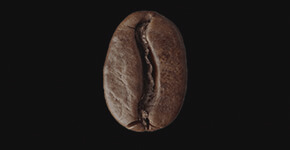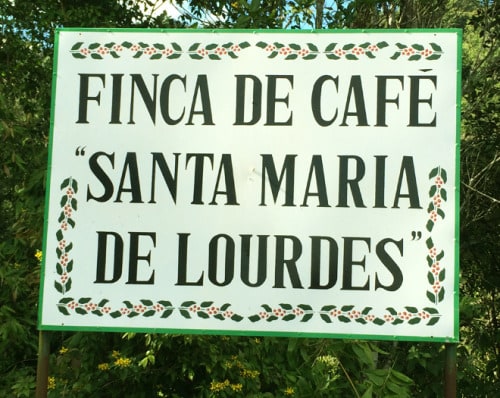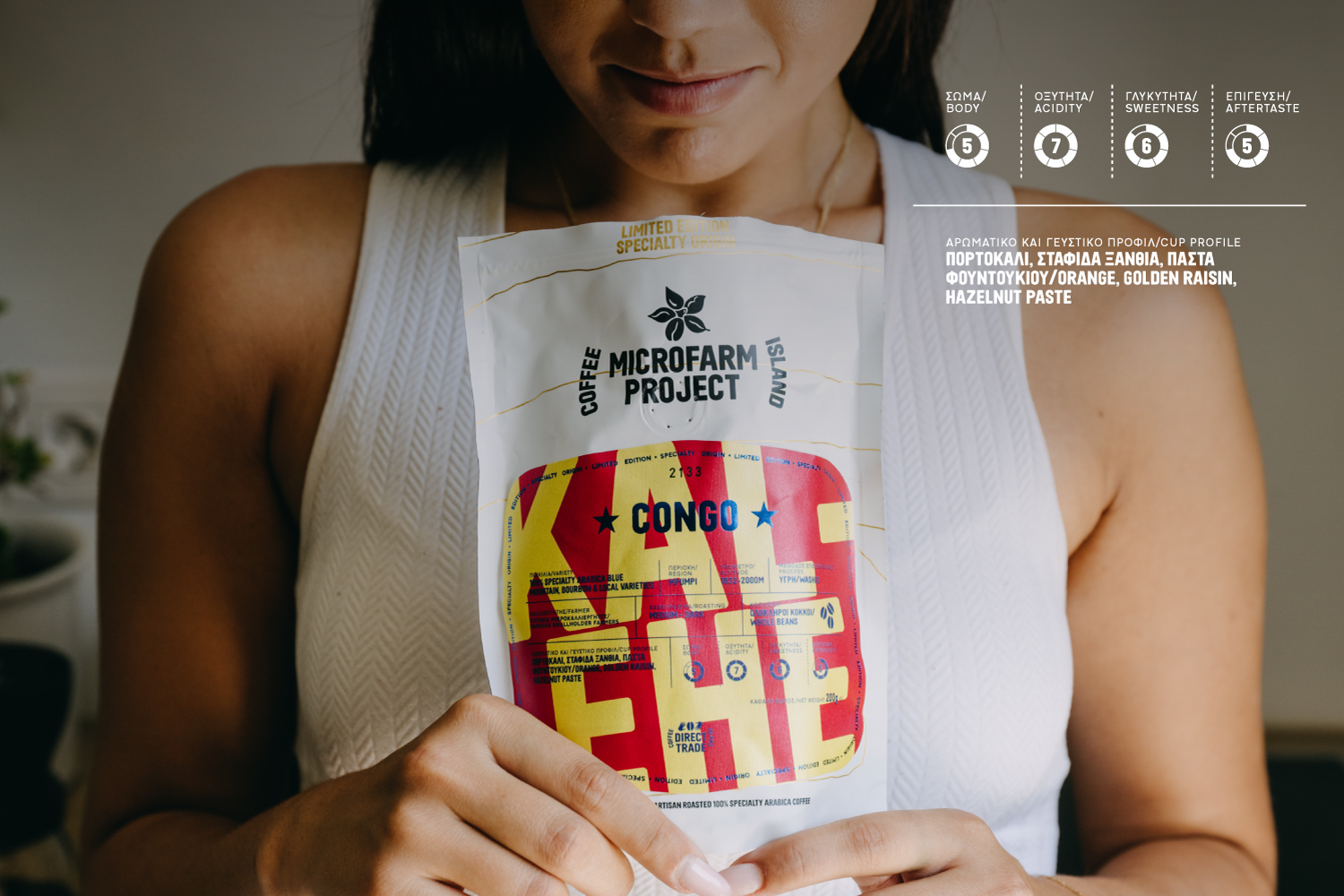The Microfarm project began with the Coffee Nicaragua Santa Maria de Lourdes, Natural Process, MicroLot 1314-3-8791 in the area Cordillera de Dipilto.
The farm Santa Maria de Lourdes is at an altitude of 1350-1550 meters in a natural wild environment rich in flora and fauna. The rescue of this environment was first goal of Octavio Peralta who despite owning 1000 acres only farms half so that the enrichment of this environment can be unhindered in its growth.
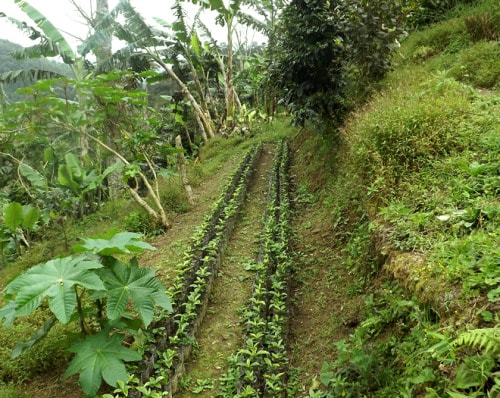
The farm’s microclimate is very wet and the trees require having a larger distance in between them so proper breathing can be achieved. There is also a stocked cantina so that the 60 permanent workers and the 150 manual labors during harvest (pickers) can eat.
All these have help the farm achieve a Rainforest Alliance certification.
Product Quick View
Farm – Santa Maria de Lourdes
Altitude – 1350-1550meters
Location – Sand Fernando, Nueva Segovia
Preparation –Natural
Variety – Arabica (Caturra, Catuai and Javanica)
Owner – Octavio Peralta
Certification – Rainforest Alliance
Harvest – March 2014
Limited Edition – ~1600kgr – 8000pcs of 200gr packages
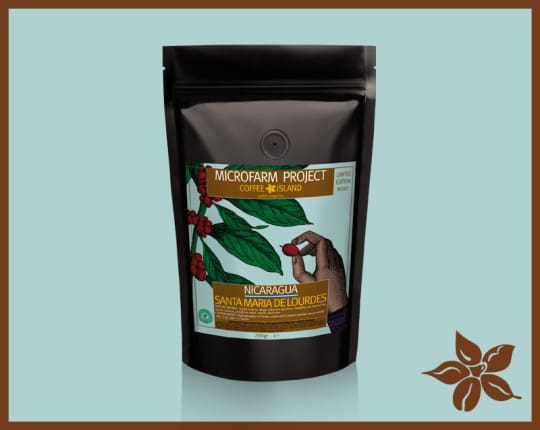
Harvest
To begin harvesting the fruit they have to reach a certain level of maturity, having the correct concentration of sugars. The level of maturity is measured with a brix refractometer. When the indication is over 22% then the corresponding fruit is gathered and separated in Micro Lots. The harvest is selectively hand-picked.
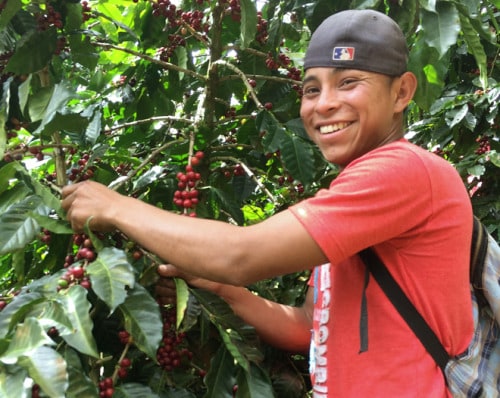
Processing
This particular MicroLot 1314-3-8791 is naturally processed. The fruit remains on the tree until they reach full maturity and have the correct concentration of sugars (>25%). They are then handpicked and left to dry like raisins in elevated drying bed for approximately 17 days.
The elevated beds, as opposed to drying on the ground, help with better ventilation so that no moisture or mold is developed and so that the fruit does not absorb any components of the soil that can interfere with the taste. This attention to detail in the process helps create its unique flavor based on complexity, purity and high sweetness.
Coffee variety
Arabica and more specifically Caturra, Catuai and Javanica.
- Caturra: Variety from Brazil that comes from the well-known Bourbon variety.Known for acidity and medium body.
- Catuai: Hybrid of Mundo Novo and Catturra. Originates in brazil but its cultivation is widely spread in central America. Known for its high acidity.
- Javanica: Believed that this variety is related to the typical variety. It has the characteristics of African coffees, such as flowery, lemon aromas. With incredible levels of sweetness.
Peralta family
The Peralta family, ever since the 70’s had 50 hectares of land in their possession that they could not farm until the end of the 80’s because of the state of the country was in. In 1994, after cleaning the land of mines, the production of high quality coffee began.
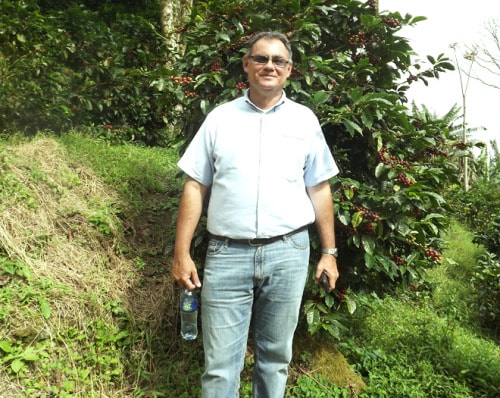
Octavio believes that the future of cultivating coffee in Nicaragua lays in the export of high quality coffee in small batches. He is interested in finding new farming methods, by combining the complexity of the natural environment and robust technological facilities.
Through this process they are able to collect data when it comes to their crops such as environment conditions (humidity, temperature, air circulation), the characteristics of the soil and the processing methods that affect each batch (MicroLot), so that they can get useful data conclude on which coffee varieties and methods are most appropriate for every part of their farm.
Nicaragua
Latin American country. The production of coffee in Nicaragua has been through a lot. The dictatorship of the Sandinista regiment from 1970 to 1990 led many producers to leave the country. Their return after 1990 was not done in favorable conditions because of the hurricane Mitch in 1998 and the long-term crisis in coffee prices at the beginning of 2000 created large problems for the producers. Despite these problems Nicaragua makes many high quality coffees that have been the headline in many Cup of Excellence competitions.







